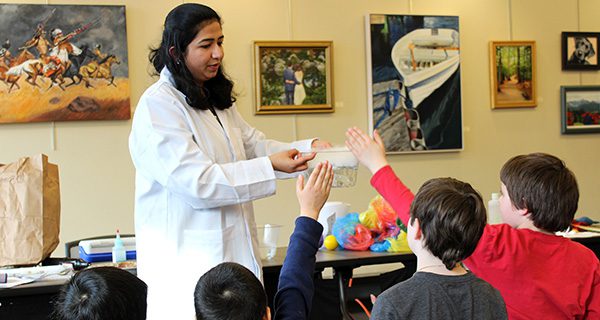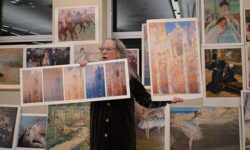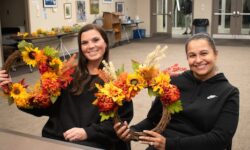[ccfic caption-text format="plaintext"]
By Laura Drinan
Hometown Weekly Reporter
Oftentimes, we think of magic as something that is whimsical and fueled by wonder.
But is science usually thought of in the same way?
From Mad Science of Greater Boston, an interactive science program for children, Uma Vadher had a question for the children at the Walpole Public Library: “Is science a form of magic? Is magic a science?”
Some children answered “no,” but Uma was determined to prove that the two were closely related.
She began by hiding a rubber chicken in a fabric-covered net, claiming that she could make the chicken disappear. She kept to her word and made the chicken vanish inside of the net, but revealed that there is a secret compartment built into the net that a magician would use to fool the audience.
“Every time a magician tries to hide something, there is always logic behind it,” she told the children.
Of course, science always has a logical explanation, too. Uma took out a piece of paper and lit the corner of it on fire. She released her grip on it, but the paper quickly burst into flame and disappeared. The piece of flash paper, Uma explained, had been dipped in nitro-cellulose and burns 120 times faster than normal paper. Flash paper does not leave any traces of smoke or ash, though, which makes it almost seem like magic.
With many more tricks and experiments up her sleeve, Uma moved on to demonstrate how air is all around us, even when we can’t see it. She inflated a giant plastic bag and let it float around the room while using a hairdryer and a leaf blower to make plastic balls levitate.
She also used a Tesla coil to show that metal conducts electricity, and she experimented with dry ice and made soap bubbles with it.
Although the library frequently hosts exciting and interactive programs for children, the Mad Science demonstration on March 27 was the grand finale to the library’s science, technology, engineering, and math (STEM) inspired month.
“This was our culminating activity from our March STEM series we did at the library,” Yvette Sammarco of the Walpole Coordinated Family and Community Engagement Programs explained.
“Typically every year in March, we do a STEM series on Tuesdays. In one of the workshops, we made catapults out of Popsicle sticks. We did shadow play, as well, so we talked about the properties of light and what makes a shadow.”
With Uma providing the children with information about air, electricity, fire, and dry ice, the program was a solid stepping stone for the children to become involved and interested in the sciences.






















